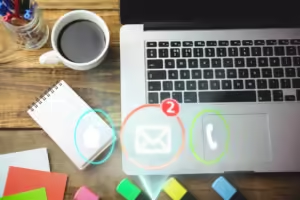
Menu
Menu
- 138 West St, Sandton, Johannesburg, 2031.
- 8375 International dr., Orlando, Fl, 32819

Before getting started with SMS marketing, it is important that you establish clear goals and objectives. This means creating measurable targets for key performance indicators such as open rates and customer engagement and loyalty. This will help ensure that your campaigns are targeted to the right audience and measure the effectiveness of your efforts.
When creating your objectives, consider the end goal of your campaign. Do you want to drive website visits? Increase sales? Increase customer retention? Once you’ve identified the goal of your campaign, work backward to determine how to best reach that goal with SMS messaging. Consider what type of content you can send and how often in order to maximize engagement and success. Segment your list into different categories so that you can create more targeted messages.
Now that you have your list and SMS marketing platform ready, it’s time to craft messages. When sending an SMS message, it’s important to keep it short and sweet while also allowing room for personalization—avoid long blocks of text or boilerplate copy. Use language that is both engaging and direct, so that customers take notice of your brand. Refrain from using too much capitalization and punctuation as this may be interpreted as shouting. Finally, always make sure to end with a clear call-to-action (CTA).
Keep in mind that SMS messages have limited characters, so they should be concise while still maintaining a conversational tone. Use the appropriate amount of content to capture readers’ attention, but avoid overwhelming them with text. A well-crafted message that is concise and persuasive has a greater chance of driving traffic to your website or store. When planning an SMS marketing campaign, consider crafting messages that include product features and amenities as part of a larger call-to-action. Show customers how easy it is to interact with your brand and make it visually appealing by using images and animations in some of your texts. Finally, always customize your messages for each customer whenever possible—personalization can go a long way toward creating relationships with existing customers and gaining new ones.
Once your SMS campaigns have been sent, it’s important to take a step back and analyze their performance. This means monitoring things like open rates, click-through rates, number of unsubscribers, and total volume of replies. This data can be used to inform future campaigns and better understand customer behavior patterns. Understanding who is or who isn’t responding positively to your messages, you can create more focused audience segments and craft content tailor-made for them.
Utilizing automation tools to simplify and streamline your marketing activities can help maximize the efficiency of your messaging campaigns. Automation allows you to schedule messages in advance, personalize copies depending on the message recipient, and autoresponder when needed. This way you can reach vast audiences faster while allowing yourself more free time to develop a creative approach or focus on other strategic initiatives.
The use of automation in SMS marketing can be especially effective when offering time-sensitive deals. Automated messages that go out on specific days of the week or month will ensure you’re leveraging your data effectively and ensuring customers never miss an offer. Additionally, an automated follow-up message to confirm customer purchases for example provides an extra, personalized touch that customers appreciate. Automation is a great tool for those who are new to SMS marketing as it simplifies the process and ensures no potential customer is missed.
When it comes to measuring the success of your SMS campaigns, tracking the performance data is key. You’ll be able to evaluate the impact of each message and notice trends within user engagement. Keeping a close eye on response rates and average replies will help you determine which messaging campaigns are more successful than others. You can then use this insight to shape future marketing strategies and analyze results against specific goals or KPIs.
In addition, audience segmentation and personalization are important considerations when measuring success. Setting up measurable objectives beforehand and tracking results using analytical tools like Google Analytics, can help you identify effective tactics. By personalizing content to different segments of your audiences better, you’ll create more meaningful conversations with customers and be able to track how engaged each group is with the various messaging campaigns sent out. You can then collect useful data such as open rates, click-throughs, and responses that indicate positive or negative reactions from users to measure the overall effectiveness of these campaigns.

Explore SMS Marketing vs Email Marketing and see which channel excels in engagement, ROI, and customer experience to boost your 2024 marketing strategy.

Discover how to boost conversions with SMS marketing using first-party data and personalized campaigns that drive engagement and sales.

Unlock the power of mobile marketing automation to boost engagement and streamline operations.